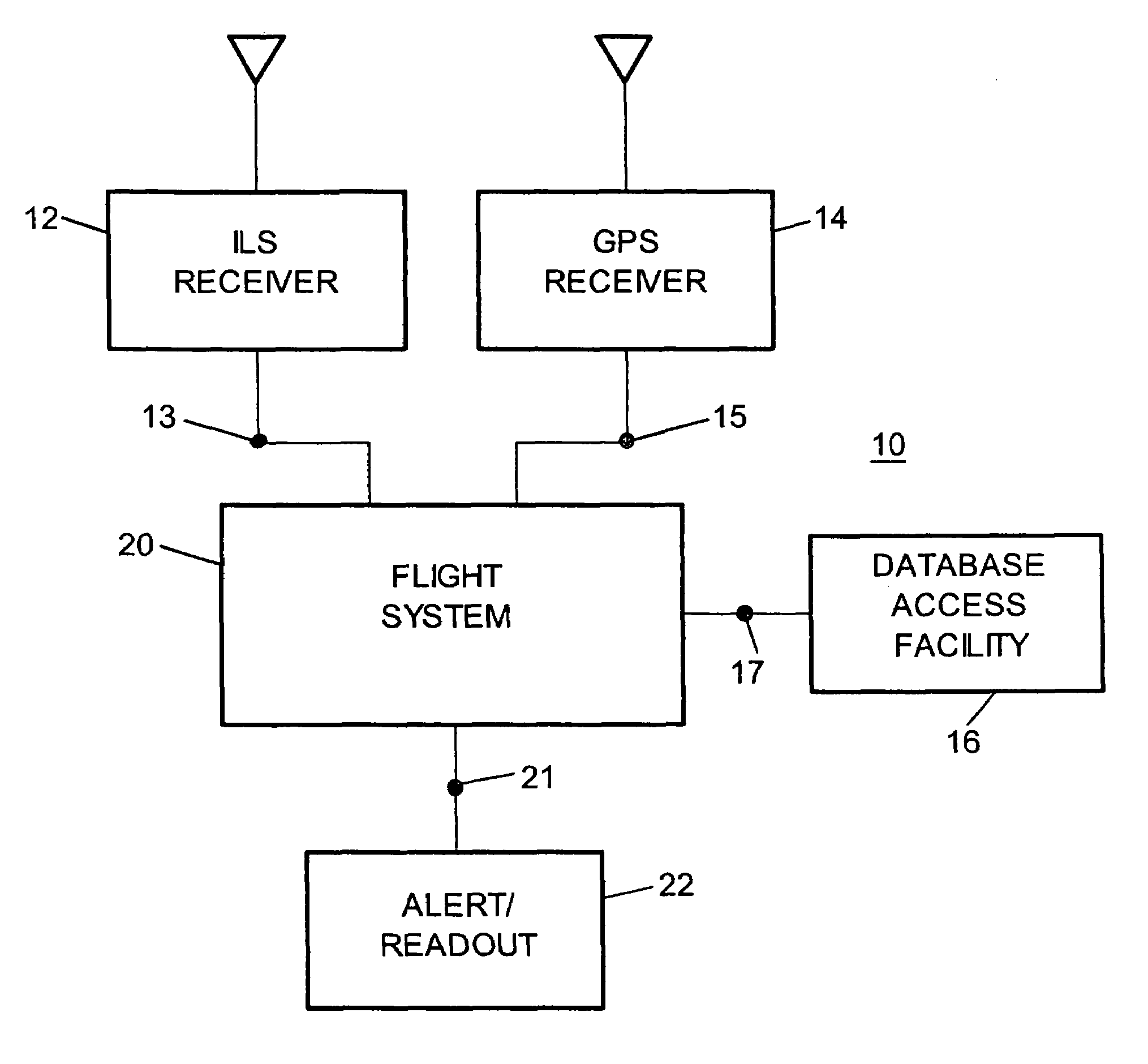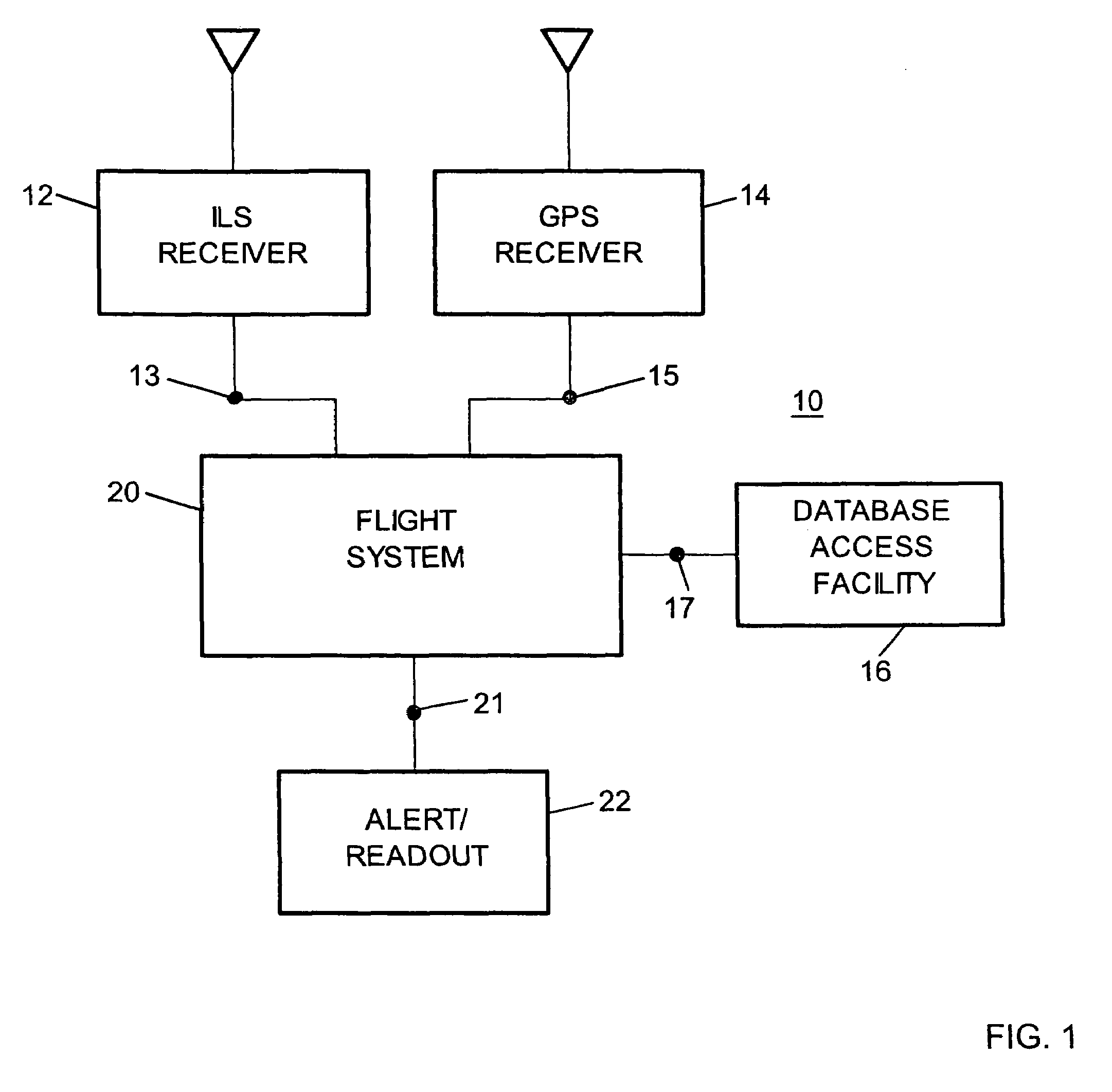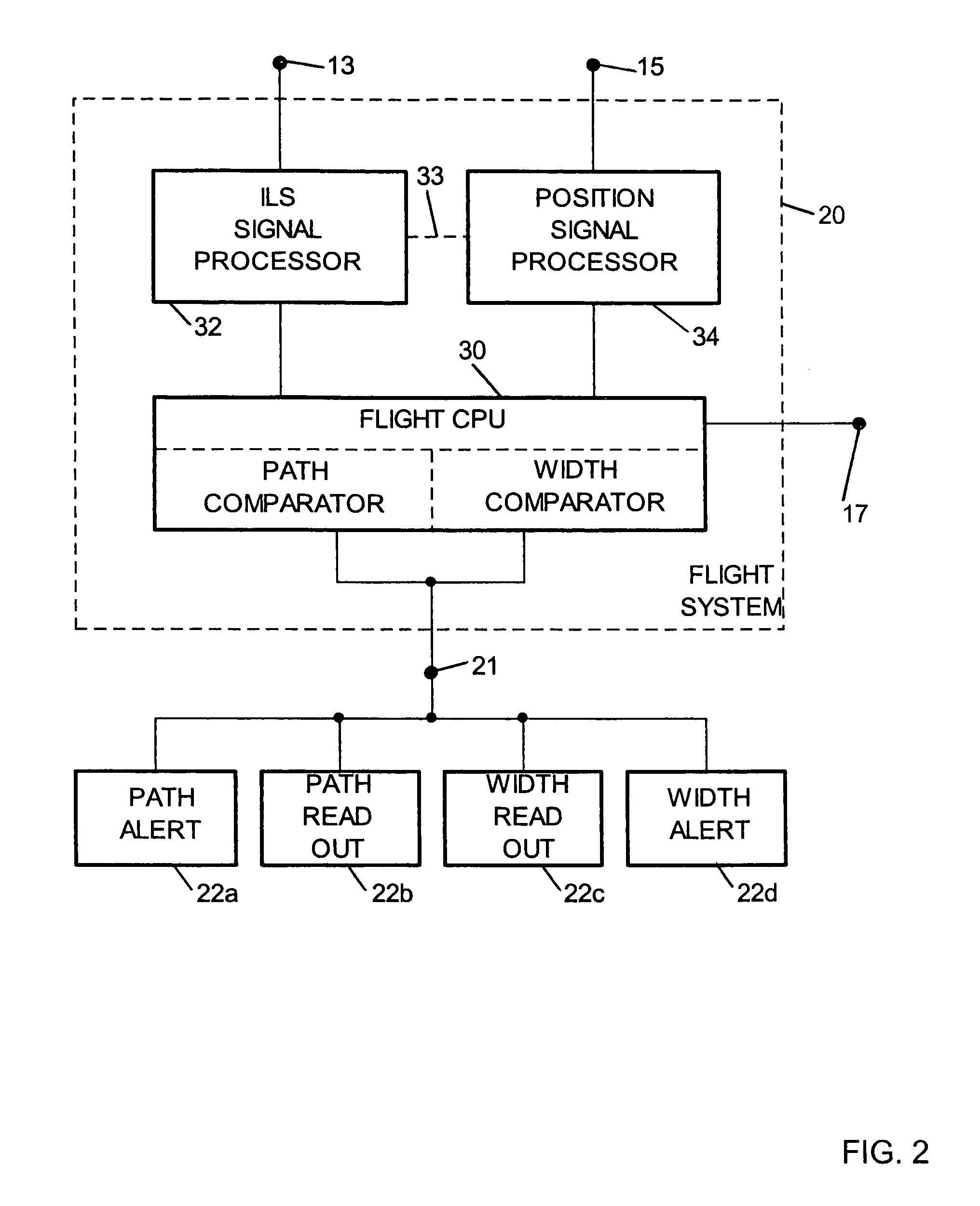In-flight verification of instrument landing system signals
a technology of in-flight verification and instrument landing system, which is applied in the direction of instruments, navigation instruments, process and machine control, etc., can solve the problems of pilots being misinformed as to the position in space of aircraft relative to runway, difficulty or impossible for pilots to rely on visual observation of landing site to safely land, and transmission anomalies affecting signals post-transmission that are generally not discernable from the ground
- Summary
- Abstract
- Description
- Claims
- Application Information
AI Technical Summary
Benefits of technology
Problems solved by technology
Method used
Image
Examples
Embodiment Construction
[0028]On a simplified basis, an aircraft approaching a runway with an associated ILS should intersect the ILS glide slope path at a predetermined point in space. For example, an intersection point about four miles from the end of the runway, from which point the aircraft could begin a 3° descent to arrive at the runway surface (this point may be referred to as a final approach fix or “FAF” point). Thus, the ILS may be designed to transmit a discernable signal in space extending from the runway upward at an angle of 3° above horizontal (e.g., a signal in space which is transmitted along the glide slope path, in order to define that path).
[0029]Ideally, this ILS feature of an upwardly angled discernable signal would always be steady, fixed and reliable, so that if an antenna on an aircraft proceeding at the proper altitude received a signal representative of the glide slope path the pilot would know conclusively that the aircraft was then at the proper point in space (e.g., the “inten...
PUM
 Login to View More
Login to View More Abstract
Description
Claims
Application Information
 Login to View More
Login to View More - R&D
- Intellectual Property
- Life Sciences
- Materials
- Tech Scout
- Unparalleled Data Quality
- Higher Quality Content
- 60% Fewer Hallucinations
Browse by: Latest US Patents, China's latest patents, Technical Efficacy Thesaurus, Application Domain, Technology Topic, Popular Technical Reports.
© 2025 PatSnap. All rights reserved.Legal|Privacy policy|Modern Slavery Act Transparency Statement|Sitemap|About US| Contact US: help@patsnap.com



